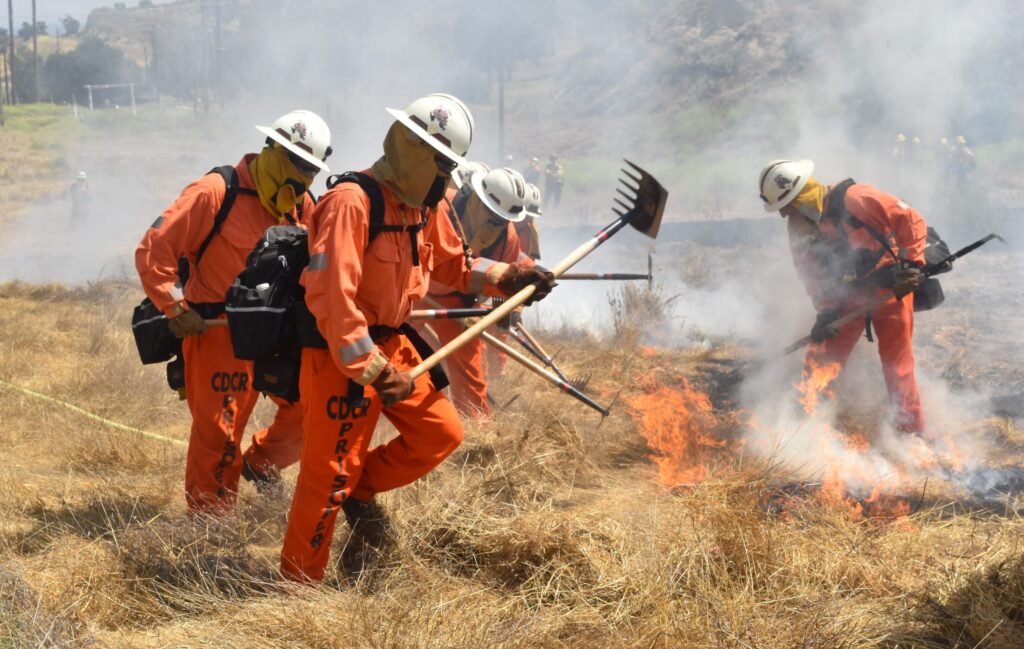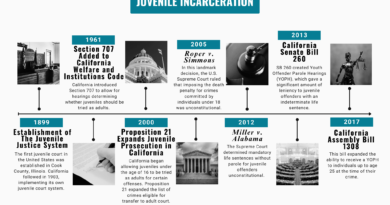How California can train more incarcerated firefighters

Growing up in southern California, I often marveled at the beauty of the landscape. Going to the beach was one of my favorite activities. Sitting on the sand on a warm summer day, looking up at the ubiquitous palm trees, and running into the waves with the squishy sand under my feet filled me with joy. It made me grateful to have been born in this state.
Now, those places I love lay in ruin, devastated by January’s wildfires. The pictures and videos I have seen from the fire-ravaged cities are incomprehensible. They are reminiscent of scenes from some sort of post-apocalyptic science fiction film.
I’ve been at CCWF for years, but I still speak with loved ones in Los Angeles. They’ve told me how unbelievable it all seems, how surreal, and how long it will take to recover from this unprecedented firestorm.
One contingent of firefighters that helped my home of Los Angeles County consisted of incarcerated firefighters who are assigned to various fire camps throughout the state to assist fire departments.
The California Department of Corrections and Rehabilitation (CDCR) operates 36 fire camps with support from the California Department of Forestry and Fire Protection, the Los Angeles County Fire Department, and other agencies. Participants receive training in wildland firefighting, leadership, public safety, first aid, hazardous materials response, structural firefighting, and rescue.
The mission statements of some camps, like Ventura Training Center’s fire camp, highlight the opportunity for a career in firefighting after release. Thanks to this training, some incarcerated individuals were well prepared to respond to the call for help when the fires raged across Los Angeles County.
Many more incarcerated people long to give back in this profound way, especially those from impacted areas. We look on with horror while our communities burn. But that is unlikely to happen soon.
Unfortunately, recruitment for fire camps is down. Over the last year, fire captains have come to Central California Women’s Facility (CCWF) to recruit incarcerated people to serve the remainder of their terms of incarceration at a fire camp.
In early 2024 and again in November 2024, a total of four different conservation camps gave presentations at CCWF to showcase the program and expand upon the benefits participants can receive from joining their ranks.
One reason for low recruitment is eligibility. Currently, only those under minimum custody can be assigned to a fire camp. Minimum custody equates to lower security.
The biggest concern in assigning incarcerated individuals to camps is the possibility of escape, which is why a classification committee “carefully evaluates the escape potential of [incarcerated individuals] assigned to a camp,” according to the CDCR Department Operations Manual.
The biggest factor relative to custody is the amount of time an individual has left to serve. Incarcerated individuals with less time to serve are those who are assigned lower custody classifications and are eligible for fire camps and other offsite assignments.
Fire camps also have to compete with other programs that may be more enticing. For example, the Female Community Reentry Program — which allows incarcerated women to serve the remainder of their sentences under supervision in the community rather than in prison — pulls from the same pool of eligible individuals as a fire camp.
Still, many at CCWF would love to go to a fire camp, like Rebecca Braswell, a physically fit Navy veteran.
“I’d leave today if I could. I’d wear an ankle monitor. I would love to help,” she said.
But Braswell is sentenced to life without parole, so she does not qualify for a fire camp assignment.
Interestingly, individuals with life sentences who have been found suitable for parole and have undergone the administrative review process can be eligible for assignment to a fire camp, provided they meet all the criteria.
The existence of this exception suggests that it is possible to open the eligibility criteria even further, provided there is the political will to do it. In order for these criteria to be modified, stakeholders within CDCR and the Governor’s office would have to endorse such a change.
The benefits of being assigned to a fire camp include an onsite canteen, recreational tournaments, onsite family leave unit, onsite visiting, selfhelp groups, tattoo removal, general education courses, college courses, FEMA courses, expungement support provided by the Anti-Recidivism Coalition, and higher pay.
However, the greater benefit is seeing the impact that first responders have on their communities firsthand.
With wildfires becoming more and more prevalent in California, brave firefighters will undoubtedly continue to battle blazes throughout the year.
Since incarcerated individuals can fight fires alongside first responders, California communities will unquestionably benefit from more people bringing their efforts to the frontlines.



